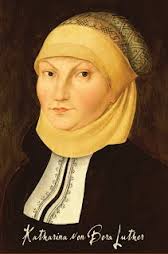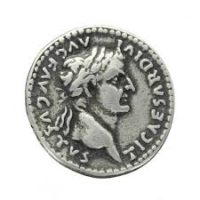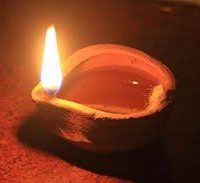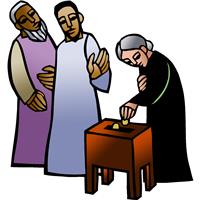You may think it’s creepy, but the lesson from the Book of Ezekiel which we heard as part of our lessons for today is one of my favorite passages of the Bible. What a visual! A whole valley filled with dry bones that rattle as they are restored to life!
Of course I also can’t help thinking about the song “Dem dry bones” whenever I hear this lesson…‘Dem bones, dem bones gonna walk around…oh hear the word of the Lord!’ God has the power to bring back to life what is dead.
For some reason, the passage from Ezekiel and this song made me think of a certain kind of fresco or painting that started to pop up in many churches in Europe in the late Medieval Ages; The ‘Danse Macabre’, the ‘Dance of Death’, or ‘Totentanz’ in German. Maybe you’ve seen this motif before: a long line of people being led in a dance by skeletons – dry bones, walking around. In this line, we usually find kings and popes, noble ladies and peasants, children, people in their prime, old people.
The first ‘Totentanz’ I ever saw was at St. Mary’s Church in Lübeck; unfortunately, it wasn’t the original, which was about 100 feet long and 6 feet tall – the church was entirely destroyed during air raids in WWII, but there is a partial replica in the rebuilt church today. A nearby museum features photographs taken of the original fresco before the war. I have to tell you, I was fascinated.
An example for the ‘Danse Macabre’ can be found here: https://hyperallergic.com/331875/lubeck-danse-macabre-chapel/
What these depictions of the Dance of the Dead express is pretty obvious: death is the great equalizer; death doesn’t distinguish between rich and poor, young or old. Death is universal, and we all have to face it at some point. And if you think of the late medieval ages, yes, death was all around; one theory is that the depictions of the Danse Macabre starting popping up everywhere, from Paris to Tallinn, as the plague was ravaging Europe in the 14th century.
Now what struck me when I saw images of the Dance of the Dead in Lübeck was the contrast between the living people and the skeletons. Ironically, the dead look more alive than the living. The skeletons seem to dance with abandon, whereas the still living look reluctant and stiff. And I guess that’s understandable: who wants to take death’s cold and bony hand and go to the grave? But why the exuberance of the skeletons, the dead? Is it just a cruel joke? Or do they maybe know something the living don’t?
I can’t but wonder what a depiction of the ‘Danse Macabre’ would look like today. In the midst of the Corona Crisis, we probably would see a long line of nursing home residents, exhausted nurses and doctors with masks, politicians, artists, first responders, regular folks, and yes, even young and healthy people.
Usually we don’t have to deal with death that much. Humanity has come a long way in treating illnesses and diseases and prolonging life (thanks be to God). We like to hide anyone dying or dead away from the realm of the living – out of sight, out of mind – but right now, we can’t escape the reality that death is still all around us – and that nobody is immune to it. We are all terminal.
Jesus came into the world as a human being, destined to die from the moment he was born. Death didn’t magically disappear the moment he entered the world – no, as we can see when we read through the gospels, there is a great need for healing. And there is death.
Today’s gospel story tells of the raising of Lazarus, Jesus’ dear friend. We don’t know how old Lazarus is when he dies – but as we can gather from the story, his death happens after a brief illness and is quite unexpected. His loss hits his sisters, Mary and Martha, hard. They grieve, they wrestle with the death of their brother, and are looking for answers when Jesus finally, finally, arrives – and he’s seemingly too late.
But even Jesus is touched in the deepest way by his friend’s death. ‘Jesus wept,’ we hear. It is hard for Jesus, the human being, it is hard for Jesus, the eternal God, to grapple with the reality of death.
Jesus wept back then, and I believe that God has wept over every death of one of his beloved children – and that God is weeping now, as we are made aware of so many untimely deaths in this world, be it through COVID-19, violence, disaster, accidents, or other illnesses that kill people prematurely.
God shares in our humanity. And this God made flesh shares in our death. We hear in today’s gospel about the trepidation of the disciples to head toward Bethany, where Lazarus and his sisters live, dangerously close to Jerusalem. How can you Jesus? It’s too dangerous! Remember how they just tried to stone you? And Thomas sure knows what’s coming: Let us go also, that we might die with him. There’s the cross; there’s no way around it.
But that’s not all. There is hope, there is reason for confidence. Even before Jesus raises Lazarus from the dead, Martha has confidence that Jesus has the ultimate power over death: ‘I know that Lazarus will rise again in the resurrection on the last day,’ she says.
And that’s the ultimate hope. But Jesus wants to show those who are gathered to grieve Lazarus’ death what lies ahead: we read that Jesus raises Lazarus from the dead as a sign, so that everyone who witnesses it understands the power of Christ – so that everyone understands that death doesn’t have the last word, that God is a God of life, that God is a God of love, and that love is stronger than anything, even death. The empty tomb on Easter morn is the ultimate sign of this reality.
And that’s not just a comfort for some distant or maybe not so distant future: it also influences how we live in the here and now. ‘Teach us to count our days so that we may gain a wise heart,’ Psalm 90 says. Yes, we are terminal, but while we are alive and kicking on this planet, we are agents of life, we are agents of God’s love. God created us so that we live life to the fullest, a truly fulfilled life, a meaningful life, a life that is lived in community and shared with others. God created us to dance with abandon, celebrating life here and now, celebrating life eternal. And, just by the way, right now, we better wisely dance alone, so as to not endanger the life of others. We can still be community. We can still have the fullness of life, even under the current circumstances.
I already raised the question about those skeletons that are depicted in all those frescoes and paintings in churches all over Europe in the ‘Dance of the Dead’: why do they seem to be more alive than the living? As we all know, art is in the eye of the beholder, and as I am beholding these images, I tend to think: the dead know something we maybe don’t know. They have experienced that there is more to come, that God indeed has the power to put those dead and dry bones back together and breathe life into them, that’s why they celebrate. Dem bones, dem bones gonna walk around – oh, hear the word of the Lord!
This post is also available in: German






